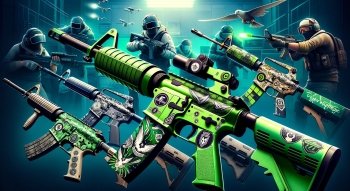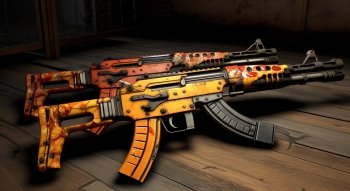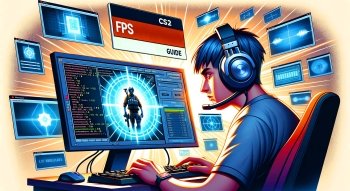CS2 Sub-Tick Explained: How Does It Work & Is It Better Than 128?

Dive deep into the next-gen transformation of Counter-Strike with CS2. While the visual upgrades, dynamic smokes, and enhanced anti-cheat systems grab the headlines, the subtle changes under the hood promise to redefine the gaming experience. Discover what sub-sticks mean in CS2 and how Valve is revolutionizing the game's networking by introducing this new feature.
Tick rate refers to how often a server updates, measured in hertz. A higher tick rate means more frequent updates from the server, leading to a more responsive feel when moving or firing a weapon. Conversely, a lower tick rate can result in less optimal responsiveness.
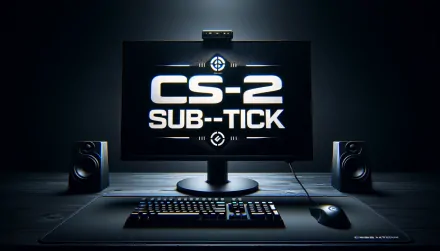
In CS:GO, the official servers had a fixed tick rate of 64 Hz and custom ones 128. But with Counter-Strike 2, there's a shift as they introduce a completely new system — sub-tick.
CS2 players, including professionals, have raised concerns about input lags and delayed kill registrations due to the new sub-tick system. Although the system is more efficient, there is a visual delay in animations, leading to feelings of input lag and misaligned spray actions. So, let's see whether the new system is worse or better and how players should adapt to the new conditions.
What is the Sub-Tick System in CS2, and How Does It Work?
So, what is a sub-tick exactly? Valve unveiled a video for the new Counter-Strike, introducing the concept of "Moving Beyond Tick Rate" with CS2 sub-tick system updates. This innovation means that the tick rates traditionally associated with shooting or moving are no longer crucial, as the server can now determine each player's specific actions between ticks.
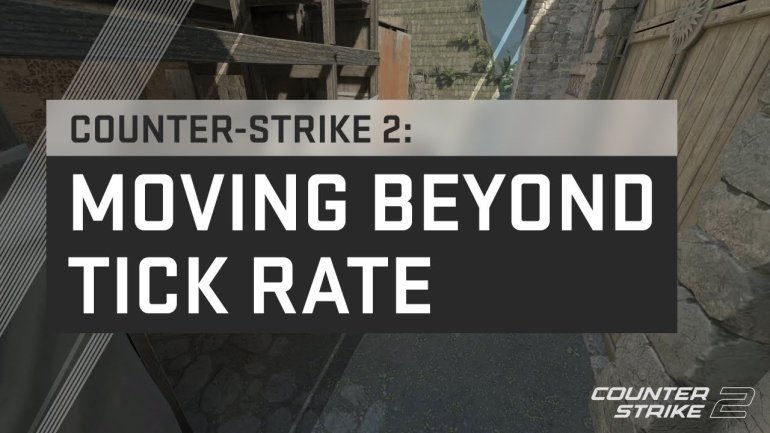
What it all means, and how does sub-tick work? Essentially, the server recognizes the precise timing of every player's shot, jump, peek, or lack thereof. This enhancement aims to make gameplay in Counter-Strike smoother and more responsive than in previous versions. In theory, the system should've been even better than the old 128-tick rate servers, yet players keep complaining about being hit behind the corner or that their shots don't land where their crosshair is. There is an explanation for this that we'll unveil further in the article.
Let’s Compare CS2 Sub-Tick With CS:GO
In matchmaking, CS:GO servers updated the data 64 times every second, translating to every 15.6 milliseconds. During each tick, the server and players' computers (clients) share and synchronize data, ensuring every participant experiences the same game state. However, for a quick game like Counter-Strike, where even a few milliseconds can mean hit or miss, the 64-tick rate system was not enough and received many justified complaints.
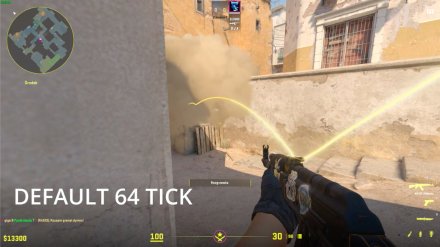
That's why most custom servers, even those that held third-party tournaments, used 128 ticks. For servers with a 128-tick rate, the exchange of this information is twice as frequent, occurring roughly every 7.8 milliseconds. Doesn't seem much, but pro players were satisfied with such precision.
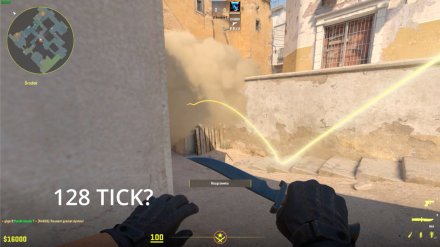
But what is sub-tick in CS2? Despite Valve's ambitious objectives with the sub-tick system, players have yet to be entirely pleased with its outcomes. Many players report frequent occurrences of getting hit around corners, suggesting a disparity between the player's perception and the game's response. Some even say that it feels like Valve downgraded their servers to 32 ticks. So, what has changed, and how do sub-ticks work?
While ticks register every action, the main difference lies in the shooting. In this video, you can see how the sub-tick register hits — now, it matters where your crosshair is when you click your mouse rather than where it is when the shot reaches your enemy. But isn't this more realistic? The problem here lies not in the new system but rather in animation, which seems to work by the old rules.
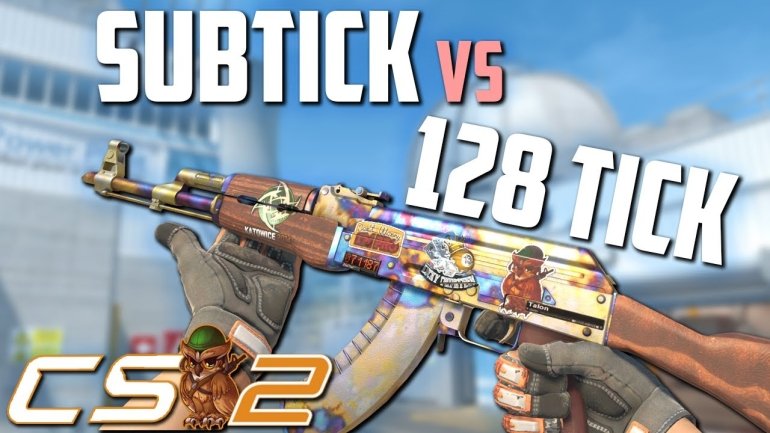
Are The New CS2 Sub-Tick Better Than 64 and 128 Ticks?
Without official data on the matter, we can only rely on the research made by the community. Using the network monitoring tool Wireshark, YouTuber MrMaxim examined the networking behavior of three different Counter-Strike servers: a 64-tick Valve official server, a 128-tick community server, and a CS2 server that uses a sub-tick. His research has helped to understand better what a sub-tick is. The findings show that the time between each packet on the CS2 server matches closely with the 128-tick server.
Interestingly, the CS2 server's fastest packet times are almost instantaneous, aligning with the concept of sub-tick, although slower times are observed. This suggests that sub-ticks in Counter-Strike 2 prioritize specific in-game actions for immediate transmission, while less crucial actions may experience slight delays. Based on the provided data, the nature and benefits of the CS2 sub-tick update remain speculative, yet they are at least close to those of the 128-tick rate, which is already an improvement.
With a sub-tick in Counter-Strike 2 explained, you should also understand that the difference between old and new system might be negligible for the average or seasoned player. However, there must be a discernible difference for elite players like CS icon s1mple. He has expressed that, upon its official launch, CS2's matchmaking servers felt subpar compared to expectations.
Interestingly, FACEIT, a well-known third-party matchmaking platform, introduced 128-tick servers for CS2. However, Valve intervened, mandating a sub-tick rate across the board, which didn't sit well with a segment of the gaming community. But it shows that Valve is dedicated to making sub-tick a thing.
How Should I Shoot Considering the New Sub Tick Logic?
To excel in aiming in any shooter, it's crucial to grasp the game's mechanics and the nuances of the weapons, as each weapon has specific accuracy attributes. In Counter-Strike, being accurate and precise with your shots is key to competitiveness. However, as some rules have changed with the introduction of the new sub-tick system in CS2, you should be ready to adapt to new conditions.
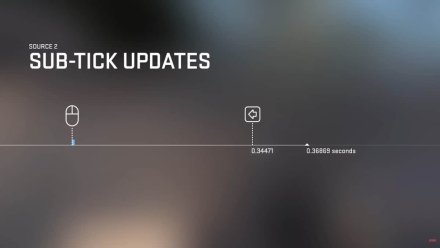
Considering the info about sub-ticks in CS2 explained earlier, your shots go to the target where you click. If you did this in CS:GO, the shot would end up where the mouse moved to, not where it was clicked. It's a slight change, but now you don't need to lead your target after the shot, instead pre-aiming for the next one.
To see these changes in action and understand how top players adapt, watch CS2 matches for a closer look at precision and strategy under the new sub-tick system.
One more factor connected to the new sub-tick system is that some players are so frustrated with it that they prefer playing with shotguns, which was quite rare in CS:GO. Due to the specifics of this weapon, you should be ready for tactics, like rushing through the Apartments on Inferno, as it will be easier to realize the advantage of a shotgun in tight corners.
***
While the aesthetic advancements and improved features of CS2 are undeniably captivating, the intricate modifications beneath the surface truly set it apart. With the introduction of sub-ticks, Valve is trying to enhance the game's networking and reshape the core of the Counter-Strike experience. There is still a lot to do, but it's already clear that the next generation of Counter-Strike is not just about what meets the eye but also about the profound changes that promise to elevate the game to new heights.
FAQ
CS2 servers indeed run at 64 ticks during the Beta, but after the launch, they completely shifted to a new sub-tick system. Although it has some problems that are still to be resolved, community research shows that it is at least on the same level as the 128-tick rate system.
With the new system in place, all the servers run at a sub-tick rate. What's more, Valve doesn't allow players to get the CS2 sub-tick explained and to see the exact parameters, so the players have to resort to experiments.


